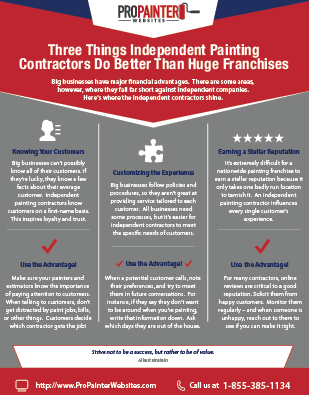Comprehending Seasonal Influences On Commercial Exterior Painting: Crucial Expertise For Success
Comprehending Seasonal Influences On Commercial Exterior Painting: Crucial Expertise For Success
Blog Article
Short Article Developed By-Carlson Chaney
When you're intending a commercial external paint project, seasonal variables can make or break your outcomes. You'll intend to think about just how temperature level and moisture impact paint application and drying out times. Selecting the ideal period can guarantee your paint adheres effectively and lasts longer. But which periods are really the very best for this type of job? Let's discover the crucial elements that can influence your job's success.
The Influence of Temperature Level on Paint Application
When you're planning a business external paint project, the temperature can significantly influence exactly how well the paint sticks and dries out.
Preferably, you wish to repaint when temperatures range between 50 ° F and 85 ° F. If it's too chilly, the paint may not treat properly, causing problems like peeling off or breaking.
On the flip side, if it's as well warm, the paint can dry out too swiftly, avoiding proper bond and leading to an uneven coating.
You must additionally consider the time of day; morning or late afternoon offers cooler temperature levels, which can be a lot more desirable.
Constantly inspect the manufacturer's suggestions for the certain paint you're making use of, as they usually provide advice on the excellent temperature variety for optimum results.
Humidity and Its Result on Drying Times
Temperature level isn't the only environmental factor that affects your business exterior paint task; moisture plays a substantial role as well. High humidity degrees can decrease drying out times substantially, influencing the overall quality of your paint work.
When the air is filled with wetness, the paint takes longer to heal, which can lead to problems like inadequate attachment and a higher risk of mold development. If you're repainting on a particularly moist day, be prepared for extensive delay times between layers.
It's vital to keep an eye on local weather and plan as necessary. Preferably, go for moisture degrees between 40% and 70% for ideal drying.
Keeping these factors in mind guarantees your task stays on track and delivers a lasting surface.
Best Seasons for Commercial Exterior Paint Projects
What's the best season for your commercial outside painting projects?
Springtime and very early autumn are generally your best options. During how much to paint an interior door , temperatures are mild, and moisture levels are commonly lower, producing excellent problems for paint application and drying.
Stay clear of summertime's intense heat, which can trigger paint to dry also quickly, leading to bad bond and finish. In a similar way, winter months's chilly temperatures can hinder correct drying and healing, running the risk of the long life of your paint task.
Go for days with temperature levels between 50 ° F and 85 ° F for optimal outcomes. Keep in mind to examine the local weather forecast for rainfall, as damp conditions can destroy your task.
supplemental resources around these variables ensures your paint job runs efficiently and lasts much longer.
Final thought
Finally, preparing your industrial external painting tasks around seasonal considerations can make a significant difference in the result. By organizing job throughout the optimal temperature levels and humidity degrees, you'll guarantee better attachment and drying out times. Remember to keep an eye on neighborhood weather prediction and choose the right time of year-- spring and early autumn are your best options. Taking these actions will aid you achieve a durable and expert coating that lasts.
